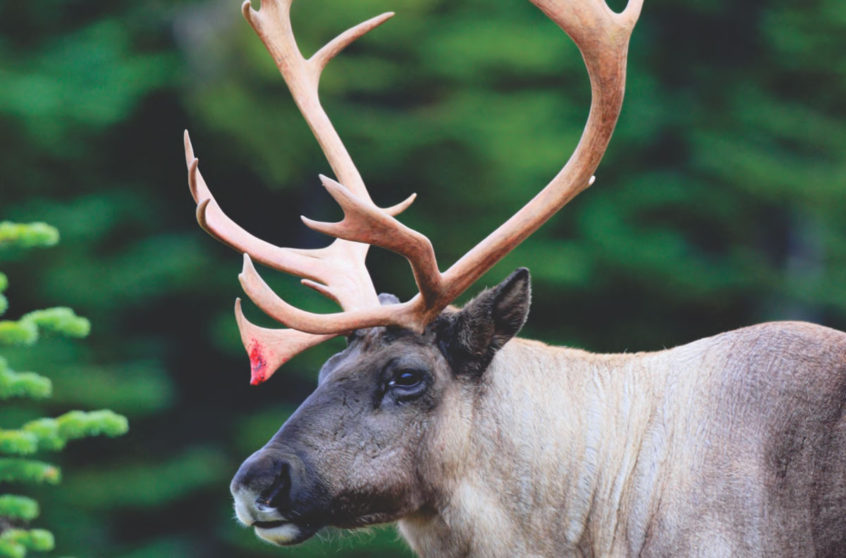Woodland caribou (boreal ecotype) is a subspecies of conservation concern because it has been eliminated from much of its range and many remaining populations are threatened, including some in Saskatchewan. Responsibility for management of this woodland caribou in Canada lies primarily with the provincial and territorial governments.
Woodland caribou populations naturally occur at low densities, reproduce slowly and are extremely sensitive to even minor changes in mortality rates. Caribou are very susceptible to predation during the calf-rearing period.
Woodland caribou generally move short distances between adjacent areas of suitable habitat, but do not migrate long distances like the better-known barren- ground caribou. They require large contiguous habitat mosaics composed of lichen-rich treed peatlands, dominated by black spruce and larch, interspersed with upland forest composed of black spruce or jack pine. This allows them to spread out sparsely (0.03-0.05 caribou/km2) so that they are both difficult to find and incapable of sustaining a permanent population of predators.
Caribou’s specialized habitat requirements make them very sensitive to habitat disturbance. The combined effects of both natural and human disturbances must be considered if woodland caribou are to persist in Saskatchewan. Although natural and human caused disturbances will be considered cumulatively, the effects are not considered equivalent.
Woodland caribou are found in the Boreal Plain, Boreal Shield and Taiga Shield ecozones in Saskatchewan. They have disappeared from the southern edge of their range in the Boreal Plain because of agricultural development and much of the remainder of this ecozone has been fragmented by other human activity. Woodland caribou in the Boreal Plain are at higher risk of loss and have “threatened” status. Populations in the Boreal and Taiga Shield ecozones are less affected by human activities although natural disturbance such as wildfire, may have an impact on spatial and temporal distribution of woodland caribou populations. Woodland caribou are considered to be at low to medium risk in this part of their range. Ecological and land use differences between the southerly (Boreal Plain) and northerly (Boreal and Taiga Shield) ecozones may result in differing management strategies and recovery actions in these areas.
The primary purpose of this conservation strategy document is to guide development of the ensuing recovery activities. The Ministry of Environment’s (the ministry) goal is to sustain and enhance woodland caribou populations, and maintain the ecosystems they require, throughout their current range. The ministry will strive to ensure that there will always be sufficient occupied caribou habitat to ensure long-term population viability, to maintain populations of woodland caribou in perpetuity. These efforts will require the cooperation of all those who live, work, invest, or spend their leisure time in Saskatchewan’s boreal forest.

